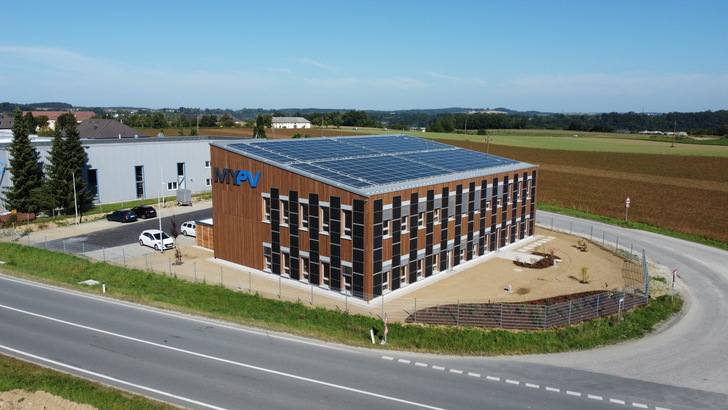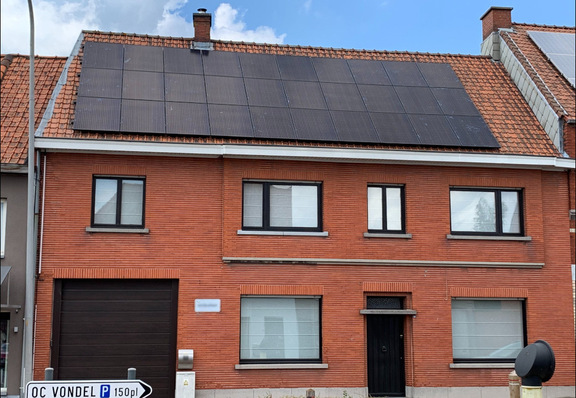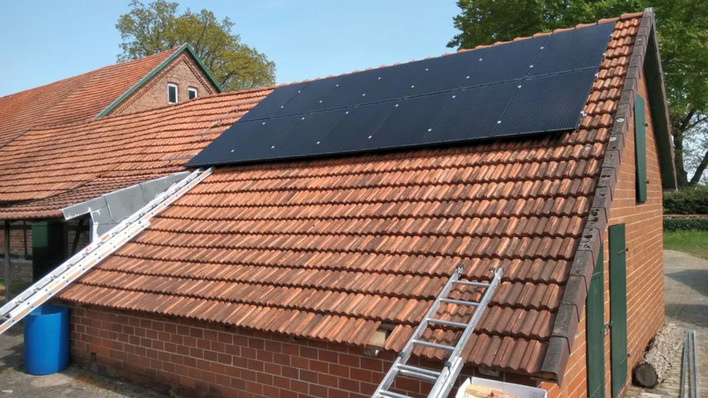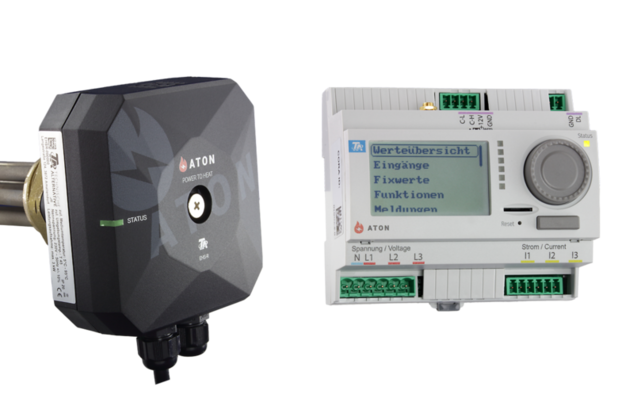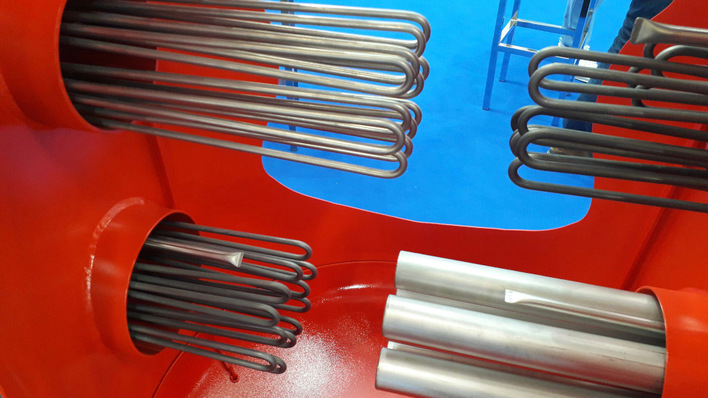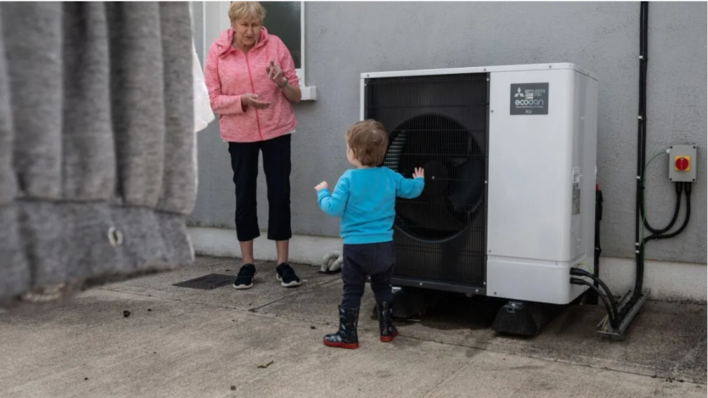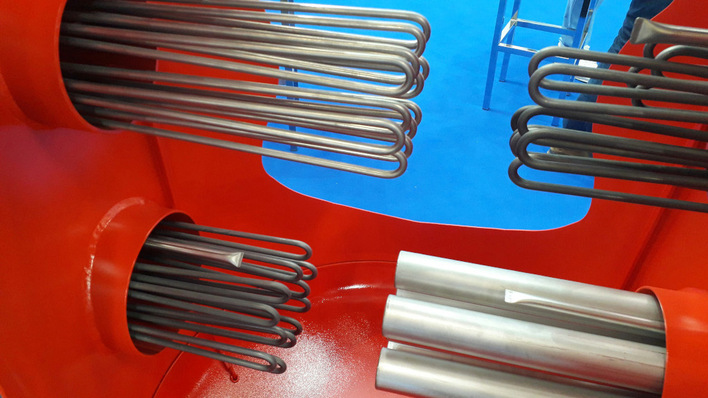Last year, the provider of electric heating solutions My-PV moved into a new company building in Neuzeug, Austria. When building the new branch, My-PV paid complete attention to sustainability and of course installed its own solutions. For this purpose, electric underfloor heating systems were installed in the rooms of the very well insulated building, which are controlled by power controllers called AC Thor from My-PV. The hot water is also heated electrically.
Photovoltaics in the building envelope
The electricity is supplied by several photovoltaic systems. On the one hand, the entire roof is covered with solar modules. On the other hand, vertical bands of solar modules have been mounted on the facades, which integrate perfectly into the natural wood facade. At least that is the concept. They also supply the electricity for the production operation, development and offices in the building, as well as for the charging stations for electric vehicles that were installed in front of the building.
See also: Sonnenkraft builds a giant shed roof at its own site in Austria
Now that the first year of operation and thus also the first heating season have been completed, My-PV is taking stock of whether this concept has also worked. The result: even in winter, the building is self-sufficient in terms of energy. The operating costs are actually negative. The 100 kilowatts of photovoltaic power on the facade and the monopitch roof were sufficient to supply more than half of the energy for heating, mobility, electricity and hot water.
Positive results after a bad solar winter
Specifically, My-PV used 17,344 kilowatt hours from the solar arrays from November 2021 to April 2022. The company drew a further 15,251 kilowatt hours from the grid. This results in a degree of self-sufficiency of around 53 per cent, actually in winter. "It is particularly worth mentioning that the solar yields in the problem months of December and January fell short of the long-term average, and in an average year the self-sufficiency would actually be even higher," explains Gerhard Rimpler, managing director of My-PV.
More generated than consumed
But My-PV has only been able to use part of the electricity from the solar plants directly. This is because the generators supplied more. Overall, My-PV achieved a self-consumption of 53.4 per cent with the system. This means that the company fed 15,300 kilowatt hours of solar electricity into the grid during the period under consideration. This is actually more than it drew from the grid, which means that the building actually produced more energy than it consumed and is, at least in balance sheet terms, energy self-sufficient across all sectors of electricity, heat and mobility. "What the Austrian federal government is only aiming for by 2030 - namely balance-sheet self-sufficiency - we have actually achieved in the heating season, and across all sectors," says Gerhard Rimpler, summarising the positive result.
Total consumption measured
In order to be able to evaluate the data as accurately as possible, My-PV recorded all energy quantities before the start of building use. In addition to the grid connection, the company also measures the energy flows of the solar system, the electric space heating, the hot water heating, the ventilation and air conditioning system and the charging columns.
The measurement results show: From November 2021 to April 2022, My-PV used 17,400 kilowatt hours for heating. That is very little compared to other company buildings. Here it paid off that My-PV focused on an energy-efficient construction standard for the company building with its 858 square metres of floor space. In addition to passive solar and internal gains, only 20 kilowatt hours per square metre are needed to maintain a comfortable indoor climate.
11,350 kilowatt hours of electricity consumed
In addition to heating, the company's electric vehicles charged 3,600 kilowatt hours during the period covered. With this amount of electricity, the employees covered more than 20,000 kilometres. Another 270 kilowatt hours were used to heat water. Because My-PV doesn't need too much water in the company building. In addition, My-PV consumed 11,350 kilowatt-hours of electricity directly, e.g. for lighting, production machinery and office equipment, as well as for the air-conditioning and ventilation system.
Operating costs covered
Thanks to the solar power system, My-PV needs less electricity from the grid and thus saves a lot of money. In addition, there is the revenue from the surplus feed-in, which further reduces the running costs. In the original planning, the company assumed that energy costs of about 2,100 euros per year would still be incurred. After the first heating season, however, it becomes clear that the operating costs are actually negative, so My-PV is actually earning money.
Also interesting: Increasing the efficiency of solar thermal power plants
Not only are the costs for electricity from the grid compensated. The solar system also pays the costs for water, sewage, insurance and property tax. "As a building owner, it is therefore a business to implement your heating technology solar-electrically," Rimpler emphasises. "With our headquarters, we are setting new standards in the solar-electric supply of commercial buildings," he is certain. (su/mfo)


